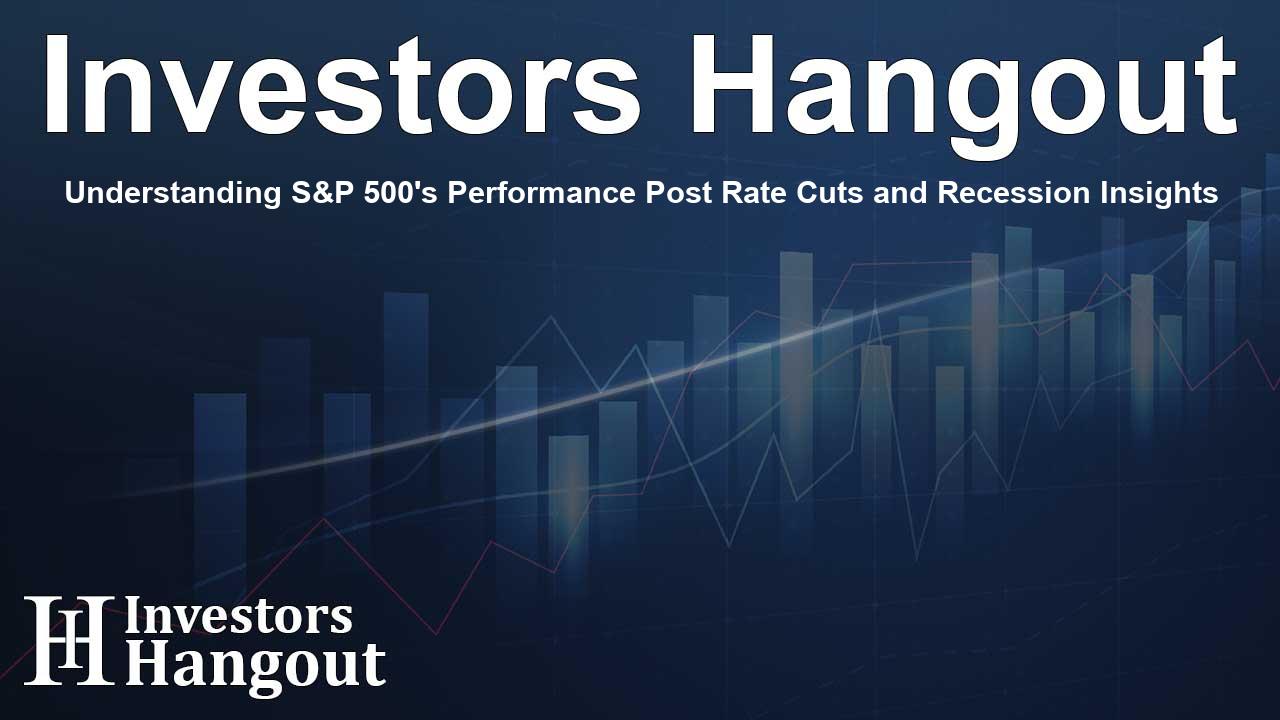Understanding S&P 500's Performance Post Rate Cuts and Recession Insights

Understanding S&P 500's Market Trends After Rate Cuts
The S&P 500 Index is often a focal point for investors as it reflects the broader market's health and investor sentiment. Recently, the index experienced a notable surge of 1.7%, driven by hopes that rate cuts from the Federal Reserve could shield the economy from a recession. However, this optimism comes amidst warnings from various analysts about the sustainability of such gains.
BCA Research Insights on Rate Cuts and Economic Concerns
BCA Research has sounded a note of caution, highlighting that while short-term interest rates have been reduced, long-term rates have seen an upward trend since the recent Federal Reserve meetings. This shift in long-term rates is particularly concerning, as they play a significant role in shaping economic conditions.
The Connection Between Rate Cuts and Market Performance
To better understand the implications of rate cuts, it is essential to analyze past events. Historical data reveals a pattern of initial stock market gains following significant rate cuts, particularly in the lead-up to the last two recessions.
Historical Context: Rate Cuts Leading up to Recessions
The experiences of previous decades provide critical insights. For instance, on January 3, 2001, the Federal Reserve took the market by surprise with a 50 basis point rate cut, just weeks ahead of its planned meeting. In response, the S&P 500 surged by 5.01% on that very day. However, the euphoria was short-lived. The subsequent three months saw the index tumble, resulting in a 17.9% loss, followed by a year-long decline of 13.5%.
Another Instance: The 2007 Rate Cut
Fast forward to September 18, 2007, when the Federal Reserve opted for a similar 50 basis point rate cut amid significant debate among economists and policymakers about the cut's necessity. Following this announcement, the S&P 500 jumped 2.92% immediately. Yet, as history would show, this was merely a temporary respite, as the index faced a 4.3% decline over the next three months, culminating in a staggering 20.6% drop over the following year.
The Takeaway for Investors: Caution is Key
BCA Research's analysts advise that while such rate cuts can initially stimulate the market, investors should remain vigilant. The historical trend indicates that early stock market gains post-rate cuts often precede deeper downturns. This pattern raises important questions about the long-term viability of market growth following monetary policy changes.
Strategic Considerations for Modern Investors
For those involved in investing, the key takeaway from these insights is the importance of a balanced approach. Being aware of the historical context behind rate cuts can help set realistic expectations and promote more informed decision-making. While short-term gains can be tempting, reflecting on past trends can provide valuable lessons on potential risks ahead.
Frequently Asked Questions
What does the S&P 500 represent?
The S&P 500 is an index that tracks the performance of 500 of the largest publicly traded companies in the United States, reflecting the overall market's health.
How do rate cuts affect the stock market?
Rate cuts generally lead to lower borrowing costs, which can stimulate economic activity and initially spur stock market gains. However, caution is advised as this may not always lead to sustained growth.
What were the outcomes of past rate cuts before recessions?
Historically, the S&P 500 has shown immediate gains post-rate cuts, but these gains are often followed by significant downturns, as was seen in 2001 and 2007.
Why should investors be cautious after rate cuts?
Past patterns indicate that initial stock market gains post-rate cuts can lead to deeper losses, suggesting that caution is warranted for long-term growth expectations.
How can historical trends inform current investment strategies?
By understanding past market reactions to rate cuts, investors can make more informed decisions and set realistic expectations about potential risks and rewards in current market conditions.
About The Author
Contact Owen Jenkins privately here. Or send an email with ATTN: Owen Jenkins as the subject to contact@investorshangout.com.
About Investors Hangout
Investors Hangout is a leading online stock forum for financial discussion and learning, offering a wide range of free tools and resources. It draws in traders of all levels, who exchange market knowledge, investigate trading tactics, and keep an eye on industry developments in real time. Featuring financial articles, stock message boards, quotes, charts, company profiles, and live news updates. Through cooperative learning and a wealth of informational resources, it helps users from novices creating their first portfolios to experts honing their techniques. Join Investors Hangout today: https://investorshangout.com/
The content of this article is based on factual, publicly available information and does not represent legal, financial, or investment advice. Investors Hangout does not offer financial advice, and the author is not a licensed financial advisor. Consult a qualified advisor before making any financial or investment decisions based on this article. This article should not be considered advice to purchase, sell, or hold any securities or other investments. If any of the material provided here is inaccurate, please contact us for corrections.
